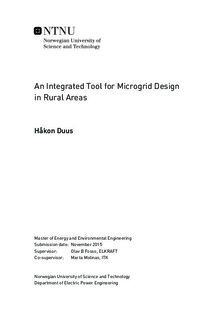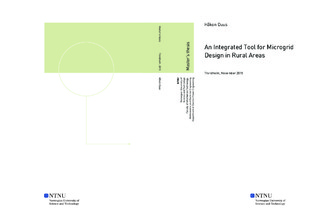| dc.description.abstract | PV-microgrids are becoming an affordable alternative to provide electricity access to remote or isolated regions, due to both a reduction in prices on solar panels and a strong focus on utilisation renewable energy resources.
When designing microgrids, the use of optimization methods has traditionally been rather limited. Flexible systematic design tools that covers the full system path from data-acquisition to optimization and load-flow-analysis, are of limited availability.
This thesis will seek to present a methodology for a cost-effective design of microgrids based on composable tools using optimization. Possible ways to overcome the lack of data will be discussed, along with the economic parameters used for the optimization process. A selection of already-existing tools will be presented, along with the advantages of the using novel sizing methodology presented in the thesis.
The methodology presented will be applied to a case-study in Bhutan. Using measured data from the study, the accuracy of initial assumptions and data-acquisition can be evaluated. The findings were that initial assumptions can give a good idea on consumer behaviour, and thus system composition, however a more detailed study on local conditions will always be preferred.
Finally stable operation of the optimized system will be validated through Matlab/Simulink-models. | |

